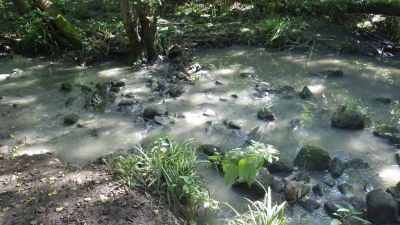A recent investigation has uncovered the presence of nearly 500 different chemicals in England’s rivers and groundwater, raising significant concerns about the health of aquatic ecosystems and potential risks to human health.
The Extent of the Pollution
The study, conducted by The Rivers Trust and Wildlife and Countryside Link, revealed that toxic chemical mixtures were detected at over 1,600 monitoring sites across England. These “chemical cocktails” include harmful substances from various sources such as industrial discharge, agricultural runoff, and household waste (The Rivers Trust) (Water Magazine). The research highlights that many of these chemicals, though present in concentrations lower than those in laboratory studies, can have severe impacts on wildlife, particularly when combined (Westcountry Rivers Trust) (Wildlife and Countryside Link).
Impact on Wildlife and Human Health

The presence of multiple chemicals in the same location can lead to compounded effects, posing a greater threat to freshwater ecosystems than individual chemicals alone. These mixtures can disrupt aquatic life, affecting species’ reproduction, growth, and survival. There is also a potential risk to human health, particularly through the consumption of contaminated fish and recreational activities in polluted waters (The Rivers Trust) (Westcountry Rivers Trust).
Call for Urgent Action
Environmental organizations are calling for more stringent regulations and comprehensive monitoring to address this issue. Key recommendations include:
- Phasing Out Toxic Chemicals: Urging the government to eliminate the use of known hazardous chemicals, such as PFAS, except for essential purposes.
- Regulating Chemical Groups: Implementing controls on groups of harmful chemicals to prevent the substitution of one dangerous chemical with another similar one.
- Enhancing Monitoring and Research: Increasing funding for the Environment Agency’s monitoring programs and conducting more research on the effects of chemical mixtures on wildlife and human health (Water Magazine) (Wildlife and Countryside Link).
Government and Public Response
Politicians and environmental groups are advocating for immediate policy changes. Richard Benwell, CEO of Wildlife and Countryside Link, emphasizes the need for a Chemicals Strategy that addresses the combined effects of multiple chemicals. Meanwhile, public campaigns are encouraging individuals to support these initiatives by signing petitions and raising awareness about the issue (Water Magazine) (Wildlife and Countryside Link).
The widespread detection of these chemical cocktails underscores the urgent need for more effective environmental protections to ensure the safety and health of both ecosystems and communities across England.
For more detailed information, you can read the full reports and findings on the Rivers Trust website and the Wildlife and Countryside Link website.
